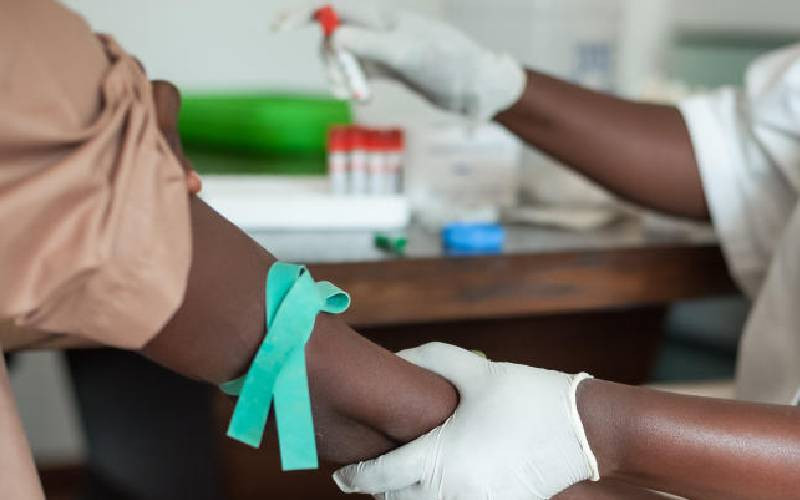
Poor child development in parts of Nairobi have been linked to poisoned maize, sorghum and milk.
Scientists have tested maize, sorghum and milk fed to hundreds of city children, measured child growth and attribute their poor development partly to these foods.
Led by Johanna Lindahl of the International Livestock Research Institute (ILRI), the scientists confirmed high levels of aflatoxin in maize and sorghum flours, and milk fed to children.
A staggering 41 per cent of children fed on these diets in Dagoretti and Korogocho estates were found stunted and having poor growth.
The findings come only months after the Kenyan Medical Research Institute (Kemri) confirmed that a quarter of pregnant women in Kisumu County were consuming dangerous levels of aflatoxin.
In the current special report prompted by widespread aflatoxin in food, scholars from Kenya, Japan, Sweden and the US said this presented an immediate public health concern.
“Aflatoxin, also a carcinogen, is one of the risk factors responsible for the worrying rise in cancers in the country,” said Health Cabinet Secretary Cleopa Mailu.
Dr Mailu made the remarks while launching the first national survey on non-communicable disease in Kenya in April.
The ILRI-led studies are published in the current issue of the African Journal of Food, Agriculture, Nutrition and Development, founded by leading nutritionist Ruth Oniang’o.
“Bad food is no food. Our popular maize, milk and meat diets are now contaminated by stunting, cancers and death,” says Prof Oniang’o.
In 12 studies, the scientists confirmed the excessive presence of aflatoxin in milk and maize, sorghum and millet flours as well as in animal feeds.
In Nairobi, the researchers had collected 403 samples of milk, maize and sorghum flours from households and retailers in Dagoretti and Korogocho.
“Aflatoxin was detected in all milk and sorghum samples and 95 per cent of the maize.”
Of these, 63 per cent of the milk samples, 16 per cent of maize and one per cent of sorghum exceeded allowable levels by the European Union.
The study found 41 per cent of the 204 children fed on these diets to be stunted. Those from Korogocho were worse off than their Dagoretti counterparts while 17 per cent of all children were underweight.
The children were aged between one and three years, many of them still breastfeeding. Aflatoxin has been confirmed in breast milk.
But the researchers warn Nairobi residents that aflatoxin exposure is not just for the poor and cite a recent urban study where 99 per cent of pasteurised milk had tested positive.
To understand how widespread the problem is, a team from ILRI, University of Nairobi and the Swedish University of Agricultural Sciences investigated contamination in cow milk and feed in Kwale, Isiolo, Tharaka Nithi, Kisii and Bungoma counties.
They collected milk and feed concentrates from 285 dairy farmers in the five counties and analysed them for aflatoxin.
They found between 50 per cent and 90 per cent of the cattle feed contaminated by toxins way above levels allowable by the World Health Organisation.
About 83 per cent of the feeds from retailers and 28.6 per cent to 100 per cent of the feeds from manufacturers exceeded the WHO limit.
Aflatoxin was present in milk samples from all the counties, with the lowest contamination in Kwale and the highest in Tharaka Nithi.
When the team assessed the level of aflatoxin contamination in human food products - maize, millet and sorghum - in the same five countries, the story was no different.
The researchers had collected 497 maize, 205 millet and 164 sorghum samples from rural households and screened them for aflatoxin.
Overall, 76 per cent of maize, 64 per cent of millet and 60 per cent of sorghum samples were positive for aflatoxin.
Of these, 26 per cent of maize, 10 per cent of millet and 11 per cent of sorghum were contaminated well beyond Kenya Bureau of Standards limits.
To avoid a catastrophe, the researchers advocate that regulators adopt zero tolerance for aflatoxin-contaminated food and feeds in the market.
“Farmers, traders and households must be educated on the dangers and how to reduce aflatoxin contamination especially in the wet seasons,” the study said.
In the country’s first ever national cancer strategy launched in 2011, the Ministry of Health promised to do just that by last year.
The inter-ministerial policy had promised, among other things, that by 2015 measures would be in place to reduce the incidence and prevalence of aflatoxin poisoning.
Six years on, the extensive ILRI study shows aflatoxin poisoning is getting worse.
 The Standard Group Plc is a multi-media organization with investments in media platforms spanning newspaper print
operations, television, radio broadcasting, digital and online services. The Standard Group is recognized as a
leading multi-media house in Kenya with a key influence in matters of national and international interest.
The Standard Group Plc is a multi-media organization with investments in media platforms spanning newspaper print
operations, television, radio broadcasting, digital and online services. The Standard Group is recognized as a
leading multi-media house in Kenya with a key influence in matters of national and international interest.











